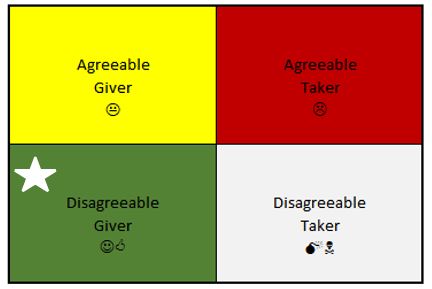From our earliest experiences, most of us learn that to thrive in any work environment, we must be pleasant to be around. No one wants to be around a grump. Or a jerk. We must be compliant, complacent, altruistic, and humble. Often that means swallowing our true feelings and stepping back. We may speak up to voice an opinion, but if it is shot down by someone of a higher status, we must capitulate. Sometimes it means allowing those in authority to take the credit for what may be our own stellar ideas.
This is what we’ve all come to believe is what it takes to be a “good” employee. We’ve come to believe that this is the way business is supposed to be run.
When I entered my undergraduate program, one of the tenets of my “adult, professional” program was the belief that higher education’s ultimate goal was to teach the art of critical thinking. The entire program was set around this premise. For those who are new to the concept, critical thinking is the process of analyzing and evaluating an issue in detail so that you are able to form your own true opinion. The idea was to equip students with the ability to contribute positive input to the working population. Using as many opinions and viewpoints as possible yields the highest return, therefore moving business and society forward.
Quite a disparity in practice.

Adam Grant, organizational psychologist and Wharton professor, has discovered what he promotes as the best employee – the disagreeable giver. Within his grid of employee types, he identifies this type of giver as the relentless employee, pushing for change when he/she receives resistance in return. This giver usually is cantankerous in his/her push for the greater good. But, if listened to, often can effect the needed changes an organization is able to use to improve its culture, productivity, etc.
This person, though, is rare. And with good reason. It takes a certain type of courage to push an agenda that may step on upper-level management’s toes. And it takes rare leadership to be willing to overlook personal pride in the name of the greater good.
The second-best employee is the agreeable giver. That would be the category most “good” employees fall into – going above and beyond what is asked of them and shutting up when they disagree with anyone on the corporate ladder above them. There are many, many of these employees.
The agreeable giver comes in second because even though that person is a giver (positive contribution), their lack of courage in making their good ideas known does little to none as far as moving the organization forward.
Does this premise also apply to outside of work? You bet it does. Recent political and social injustice issues have polarized our country. Two factions taking sides. You must belong to and support whichever side you choose. The common belief is that there is no third side, no in-between. There is only right and wrong, depending upon which side you take, each claiming the other to be the evil side.
Few arguments in life are so explicit. Few “sides” are so definitively right, or wrong. Most squabbles have basic truths underlying their branches. The key is to set emotion and bias aside in order to land on a solution acceptable to both. Then work toward that solution.
To solve the sticky and difficult issues we face today, we need disagreeable givers, not just in the workplace, but in life also. Those people who will employ a superior model of critical thinking, examine both sides with completely uncompromised analysis, and bring the full force of their creativity to light to find answers acceptable to both sides.
Then, and here’s the most important part of it, step into the fray to enlighten while taking flak from both sides. Disagreeable givers. Do you have the courage to be one of them?
Copyright, 2021, Monica Nelson — All Rights Reserved
For Survival Tips when becoming a disagreeable giver, see my LinkedIn Article.

